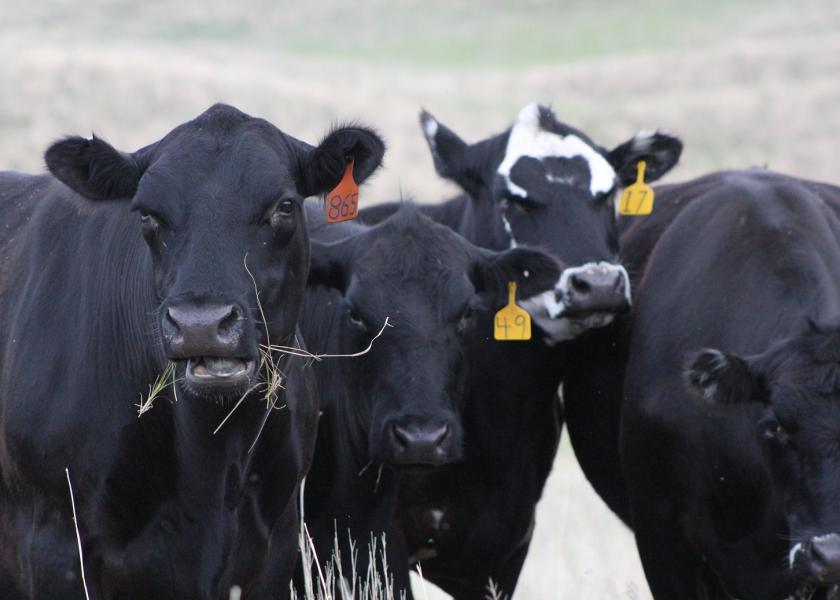Cattlemen Have Opportunity to Educate Consumers About Animal Welfare

Cattlemen and consumers share the desire to serve their families safe, high-quality meals, but both are starting to share a deeper understanding of beef from pasture to plate.
One heightened concern is animal welfare, said Shawn Darcy, director of market research for the National Cattlemen’s Beef Association (NCBA), a contractor to the Beef Checkoff. 
"Consumers are thinking about these things, but they’re coming from a place of low familiarity," Darcy said.
The top drivers for consumer purchasing decisions still are taste, value, safety and convenience. It’s just that secondary drivers from environment to animal welfare are growing year by year.
When asked, 60% said they were concerned about how cattle are raised—especially on animal welfare. Specifically, they want to know how and where animals live, and how they’re treated.
Lily Edwards-Callaway, assistant professor of livestock behavior and welfare at Colorado State University, works to answer those questions with science.
"Everyone has a benefit from animals being treated well, no matter if they eat meat or not," she said.
The science is evolving, and it’s moving toward understanding the affective—or mental—states of the animal.
For example, Edwards-Callaway presented a study where a dairy cow was asked to choose concrete or rubber flooring. Another study gave cattle to the option of lying in the sun or standing in the shade. Most preferred to stand under shade.
Aggressive handling or painful procedures change an animal’s affective state, she said, those negative impacts lessened with calm stockmanship and pain management.
"We need to make sure that we’re considering what’s important to the animal versus what’s important to us," Edwards-Callaway said. "I think that a painless death is so much more important than what happened previously, but we need to consider both obviously, right? Their whole life is maybe more important than their death."
The cattle industry is traditionally health centric, she said.
"The basic part of animal care and management is health, maintenance, growth and performance," Edwards-Callaway said, noting those simply relate to animals in production settings.
With those bases covered, she said, "where we’re going in terms of the animal health for science and production is social needs, mental stimulation and choices."
She summarized these as the five opportunities: for a well-balanced diet, to self-maintain, for optimal health, to express these in specific behaviors, and the opportunity for choice and control.
But how can the consumer rest easy with this knowledge?
After the focus group, Darcy’s team surveyed 1,000 consumers asking if they know what happens from pasture to plate. The largest response? "I don’t know."
There’s just a lot of mistrust from consumers, Darcy said.
"They feel like the current state of the food industry and its mass-produced large operations are caring about the business, not caring about the animals," he said.
As for the happy cow on small, family farms, they believe those are a "dying breed," Darcy said.
The brightest hope now is explaining Beef Quality Assurance (BQA) to consumers: 67% said it increased their confidence in the whole beef industry, he said.
"It’s a checkbox to the consumer," comforted to know BQA is in place, he said, noting most don’t want extra details.
The Checkoff-funded Beef. It’s What’s for Dinner.® campaign last fall launched a new series of 30-second commercials.
"We’re giving them that information and that transparency, but we’re not necessarily posting ‘bqa.org’ on Facebook for everyone to see," said Darcy. "We are giving them that video, educating and bringing them along on that journey for us."
Building commonality and trust is the biggest way to move the needle, he and Edwards-
Callaway said.
Everyone from 40,000-head to 40-head operations can join BQA and unite as members of this larger community.
"It’s not just a few hundred family farms that are local," Darcy said. "It’s hundreds of thousands across the country that are raising beef in this way. And we do have standards and guidelines behind that—that makes consumers feel better."
Consumer animal welfare concern will continue to grow. But by ramping up its communication and transparency, the beef community will match their concerns with answers.







